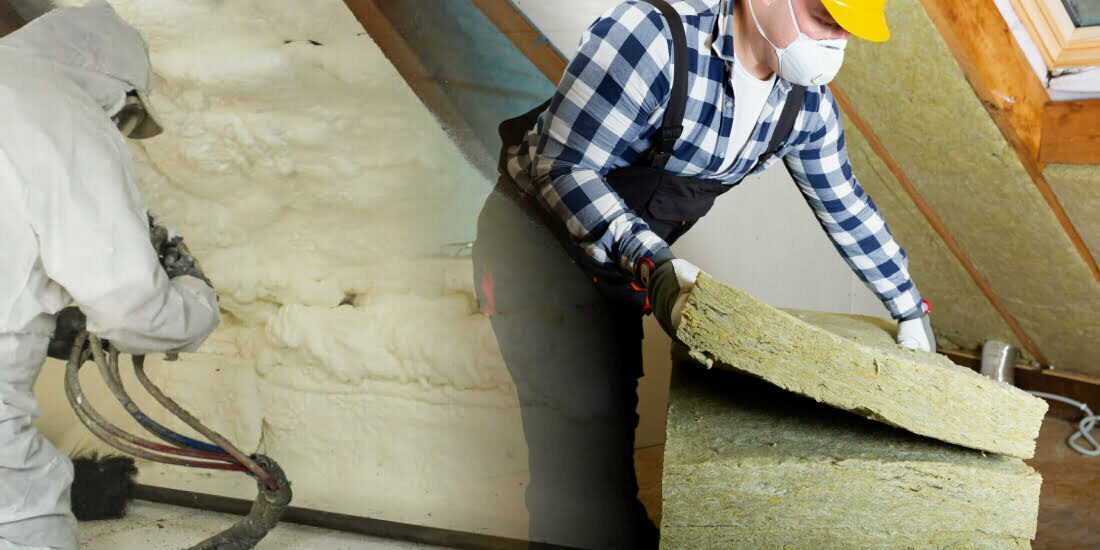Making a switch to the right insulation for your home can be a daunting task. With so many types of insulation on the market today, it can be difficult to know which one is best for you. In this article, we will take an in-depth look at two popular insulation choices: traditional insulation and spray foam insulation. We’ll discuss the advantages and disadvantages of both, as well as how much each option costs and how long it will last.
Benefits of Spray Foam
Spray foam insulation has become the go-to option for homeowners looking to improve their home’s energy efficiency. Unlike traditional insulation, spray foam expands and seals off any cracks or gaps in walls and ceilings, providing superior thermal protection. And that’s not all – there are a plethora of benefits to be gained by making the switch from traditional insulation to spray foam. So get in touch to get the best services from our experts in spray foam insulation.
For starters, spray foam insulation is highly effective at regulating indoor temperatures throughout the year regardless of outside conditions. It also helps reduce energy consumption by creating an airtight seal that prevents heated or cooled air from escaping through small crevices in your walls and ceilings. In addition, it eliminates drafts and moisture buildup while also helping reduce noise pollution between rooms.
Cost Comparison
Making the switch from traditional insulation to spray foam insulation can provide many benefits, but is it worth the higher cost? To help make this decision easier, a cost comparison of the two options will be helpful.
Traditional insulation is typically one of the most affordable options available for homeowners and comes in several types such as fiberglass batts, cellulose, and mineral wool. The installation process for traditional insulation is also relatively easy and straightforward which means fewer labor costs. On average, you can expect to spend anywhere between $0.50 – $1.50 per square foot depending on the type of insulation chosen.
Spray foam insulation offers superior performance when compared to traditional types of insulation due to its air-tight seal and greater R-value rating; however, it does come with a higher price tag than other alternatives.
Environmental Impact
Making the switch from traditional insulation to spray foam insulation can have a major impact on the environment. Spray foam insulation is quickly becoming the go-to choice for many homeowners due to its superior ability to regulate indoor temperatures and reduce energy bills. Furthermore, it has several other benefits that are beneficial for both your home and the environment.
Spray foam insulation is made of polyurethane, which is a more environmentally friendly material than fiberglass or cellulose used in traditional insulation materials. This means that fewer pollutants are emitted during its production and installation process when compared with traditional insulations. Additionally, its airtight seal helps prevent air leakage, which helps reduce overall energy consumption and conserves natural resources of energy sources like electricity and gas.
Durability & Lifespan
Making the switch to spray foam insulation can be a great way to ensure that the insulation in your home is up-to-date and working properly. Durability and lifespan are two important considerations when deciding whether or not to make this switch from traditional insulation. Spray foam insulation has an extremely long lifespan since it does not degrade over time, unlike traditional insulation which can absorb moisture, mold, and other debris that can reduce its effectiveness. Additionally, spray foam insulation is more durable than traditional options because it has a stronger bond with the walls of your home which prevents air leakage and increases energy efficiency. When installed correctly, spray foam insulation will last for many years without needing replacement or maintenance. This makes it a wise choice for any homeowner who wants to invest in their home’s comfort and energy efficiency while also saving money on future repairs or replacements.
Conclusion
For many individuals, the installation of insulation is a necessary task to protect their home or business from energy loss. However, deciding which type of insulation is best for a particular space can be difficult. In this article, we discussed the pros and cons of traditional insulation vs. spray foam insulation.
Traditional insulation has been around for decades and is generally easy to install and relatively inexpensive compared to other types of insulation products. It also has the good soundproofing capability and does not require extensive maintenance over its lifetime. On the downside, it usually doesn’t provide as much thermal protection as spray foam insulation does and may need more frequent replacement over time than spray foam would require due to settling or deterioration from pests or moisture damage.
ALSO READ / common garage door problems and repairs




